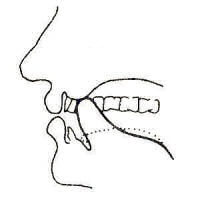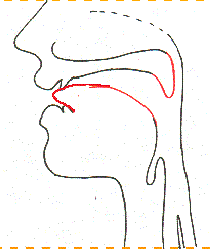For native Chinese speakers, distinguishing between the English “L” sound and voiced “th” sound can be hard. Today we’ll practice these two sounds with some tongue twisters. We’ll focus on “L” and voiced “th” at the beginning of words; words starting with these sounds are especially challenging for Chinese ESL learners.
Examples of Voiced “th” and “L”
Before we started– how can you know a word starts with a voiced “th” and not an unvoiced one? There’s actually an easy way to tell.
Structure words— words that have a grammar function rather than a specific dictionary meaning– use voiced “th” at the beginning. Examples include this, that, these, those, the, than, then, and they. Vocabulary words with specific meanings start with an unvoiced “th” (thing, through, thought, etc…)
To native Chinese speakers, the voiced “th” sounds a lot like the “L” sound, especially at the beginning of words. This confusion is understandable. Both sounds can be made with the same mouth movements. You can make the th/L sounds by pushing your tongue against the back of your upper front teeth:
FIGURE 1

Or sticking your tongue out between your upper and lower teeth:
FIGURE 2

Most commonly, the “L” sound is made by the mouth position in Figure 1, while the “th” sound is made by the mouth motion in Figure 2. But again, both of these movements can make either the “L” or “th” sounds. So how can you distinguish the two?
One thing you can do is listen closely to both sounds in English. Let’s do this with the similar-sounding words they and lay. Check out the audio below:
THEY
LAY
Can you hear the difference? If you don’t feel confident yet, listen to me say these words again. This time I’ll say the beginning sound of each word just a little bit slower:
THEY, LAY
By now, most of you probably noticed the difference. But if any of you still have doubts, listen once more to the beginnings of those words, spoken really slowly:
THEY, LAY (slowly)
I know you heard the difference that time! Now you’re ready to try saying these two sounds yourself.
Tongue Twisters with Voiced “th” and “L”
Again, many Chinese ESL students have a really hard time distinguishing these sounds. So read this tongue-twisting set of words out loud very carefully:
- this list that Latin these leaves those lows the lump they lay
Were you able to make the different sounds? You can check your work by listening to my own reading of the word list:
TONGUE TWISTER: Minimal pairs with “L” and voiced “th”
Next, read a full sentence tongue twister, so you can contrast these sounds in connected speech:
- That Latin man leaves these letters for those lovely ladies that live in this little house that lies on the lakeside.
And again, you can see how you did by listening to my model recording:
TONGUE TWISTER: Voiced “th” and “L”
The takeaway
The “L” and voiced “th” sounds are very difficult to distinguish for many native Mandarin Chinese speakers. So be sure to practice the speaking and listening in this post with careful attention. Mastering these two sounds can greatly boost your understandability when you speak in English. This in turn can give you a better TOEFL Speaking score… and perhaps a better TOEFL Listening score too!






Leave a Reply